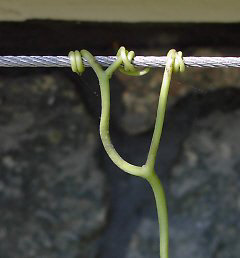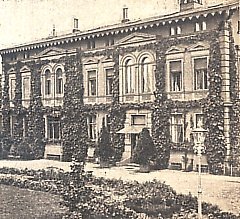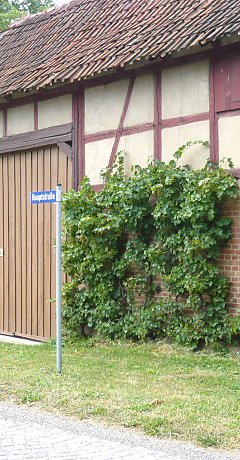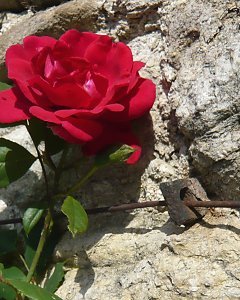Stainless Steel Wire Rope from FassadenGrün
The wire, wire rope (cable), and rods from Fassadengrün are always made of high grade stainless steel. Here you will find the respective product sheets. Our wire and wire rope are available in different diameters, appropriate for your respective greening project.
>>> Pricelist.
Why Trellises made of Wire Rope?
Earlier, for example in the Baroqueperiod, fruit was espaliered on copper wires. Stranded stainless steel wire ("wire-rope" or "cable") is used today, primarily because it is still flexible even with thicker diameters. There do exist gigantic cable systems with 16 mm cables, but FassadenGrün works with stainless steel cables of 2, 3 and 4 mms, which are more than sufficient in nearly all cases. The advantage of wire rope is its discreetness and ability to showcase the plant itself. Cables provide surprising aesthetic effects with their sleak, delicate lines... climbing plants like to hold on tightly to the corrugated surface. Wire cables are unbeatably flexible because, unlike premade lattice frameworks, they are adaptable and for every situation you can find an arrangement! Attachment is not limited to predefined grid points but can be chosen as best fits your unique facade. Wire ropes are also a clean solution! Dirt, algae and moss- build up are no significant problem here.
Different Wire Rope Diameters
Our lightest trellis systems (easy "mini" kit and light kits), suitable for clematis and other slow-growing annual climbers, are made with thin 1.8mm wire. 3 mm cable is used in our medium kits, is extremely versatile and applicable in most cases: it can be tensioned relatives easily and bent by hand during assembly. 4mm ropes are only used for exceptionally heavy loads and for vigorously growing/twining plants like wisteria. Installation is more challenging: the ropes are difficult to tighten by hand (two people are really needed for assembly). We use 4mm ropes for our heavy and massive trellis systems.
Rods within Cable Systems
For those who choose to put together their own cable system (rather than order a premade kit), FassadenGrün offers trellis rods/poles -- 4 or 5 mm made of a strong stainless steel. They have (as opposed to ropes) a certain rigidity and can supplement a rope system installation, for example, by creating a tighter grid structure. By such a reduction in the 'mesh size,' some plants-- such as clematis-- can climb better.
Single-strand Wire Instead of Wire Rope
FassadenGrün also offers stainless steel 1.2 mm single-strand wire (DR 01220) Why? Although today wire rope is preferable to single strand wire in almost all cases, using wire can be an inexpensive solution in minor or lower-lying locations, e.g., with the spanning of small wall fields where the wire ends are then 'latched' directly into staples, eyelets, etc.., thus eliminating the need for cable clamps.
Why High-Grade Steel?
Aren't simple, inexpensive galvanised cables and wall supports just as suitable as high-grade stainless steel? Yes- as a very short-term cheap solution. Such small parts are usually made of steel with a thin layer of zinc applied by electro-zinc plating (as opposed to hot-dip galvanising which creates a thicker layer of zinc). Used in the context of 'greening,' the metal is subjected to high levels of humidity and evaporation is slow... electrolytic corrosion and organic secretions become inevitable. Soon, the zinc coating is dissolved and rust streaks form.
Cold Metal?
We sometimes hear that stainless steel wire is 'cold,' and can therefore be harmful to climbing plants. But, for the millions of vines that easily survive winter after winter on the metal wires, this phenomenon has never been verified and essentially holds no weight. At a temperature of -10°C, plant and metal are equally as cold, because the plant has no intrinsic heat. It protects its cells from freezing by storing sugar molecules. A "heating up" isn't possible in summer either because the glistening steel cables reflect the light and heat.
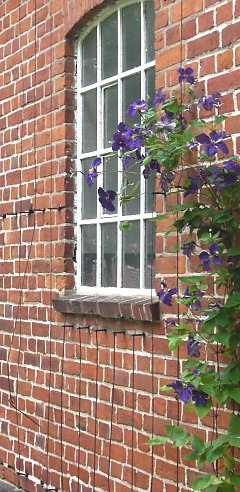
Old steel wires, circa 1880; today used for clematis, Sierhagen, Schleswig-Holstein

3 mm vertical rope with a horizontal 4 mm trellis rod installed on a balcony

